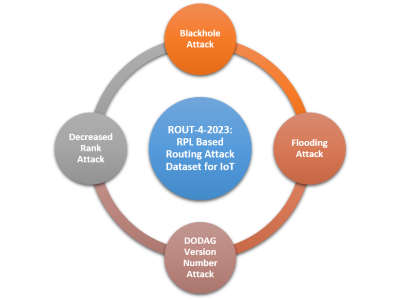An anonymous High Triglyceride and LDL values Dataset

- Citation Author(s):
- Submitted by:
- Murat EMEC
- Last updated:
- DOI:
- 10.21227/e95p-dr62
- Data Format:
 615 views
615 views
- Categories:
- Keywords:
Abstract
This study presents a comprehensive dataset to analyze risk factors associated with cardiovascular disease. The dataset comprises various patient attributes, including gender, age, total cholesterol, HDL (high-density lipoprotein), triglycerides, non-HDL (non-high-density lipoprotein), NIH-Equ-2, and direct LDL (low-density lipoprotein). These attributes comprise 25,991 patient data, robustly representing a large population sample. The primary focus of this investigation lies in examining the impact of elevated triglyceride levels on the risk of cardiovascular disease, a significant public health concern. Furthermore, the study evaluates how these elevated triglyceride levels can predict LDL (low-density lipoprotein) values, a critical biomarker in assessing cardiovascular health. Through meticulous analysis, the findings shed light on the intricate relationship between triglyceride levels and cardiovascular risk, offering valuable insights for preventive strategies and targeted interventions in clinical settings.
Instructions:
Features:
- Gender: This feature indicates the gender of the patients. Usually, a numeric coding is used, where 1 represents male and 2 represents female.
- Age: A numeric feature indicating the age of the patients. This can be used to examine the age distribution of patients and assess the impact of age on the risk of cardiovascular disease.
- Total Cholesterol: This feature measures the total cholesterol in patients' blood. High levels of total cholesterol can increase the risk of cardiovascular disease.
- HDL (High-Density Lipoprotein): HDL is "good" cholesterol. High levels of HDL generally reduce the risk of cardiovascular disease.
- Triglycerides: This feature indicates patients' triglyceride levels. High triglyceride levels can increase the risk of cardiovascular disease.
- Non-HDL (Non-High-Density Lipoprotein): This measures the total cholesterol level minus the HDL level. Non-HDL can be used as an indicator to determine the risk of cardiovascular disease.
- NIH-Equ-2: This feature is a value obtained by an equation developed by the NIH (National Institutes of Health) to calculate cardiovascular disease risk.
- Direct-LDL (Direct Low-Density Lipoprotein): Refers to the level of LDL (low-density lipoprotein) measured directly. LDL is often referred to as the "bad" cholesterol, and high levels can increase the risk of cardiovascular disease.









In reply to 1 by ashiq nm
0